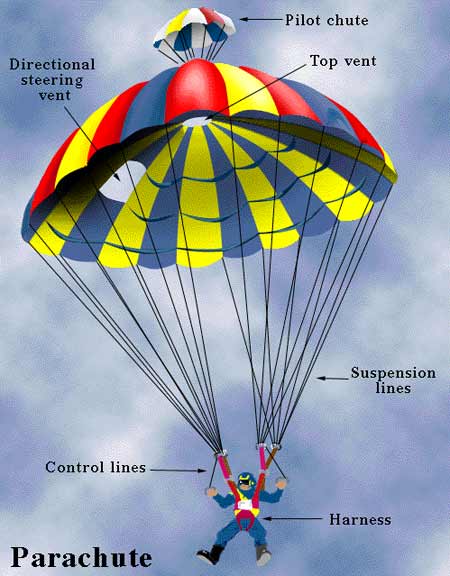How Do Skydivers Control Their Descent?
When a person jumps from several thousand meters high, there is no fixed descent trajectory. However, athletes and military personnel can control their parachutes to prepare for landing at a designated position. How do they manage their landing direction?
When humans invented parachutes, they took this issue into account. It is well-known that when the parachute deploys, the air density inside the parachute becomes greater than the air density outside. Designers began to think from this point; they assigned codes to each parachute’s suspension lines and tied a short piece of rope at the end of the first and last suspension lines. A control line was attached to this short rope to connect the suspension lines together.

Structure of a Parachute (Photo: wings.avkids)
When a skydiver wants to turn left, they simply pull down on the left control line, which causes the left suspension line to descend. This action makes the left side of the parachute’s air vent collapse inward while the right side bulges outward. Air inside the parachute will then escape from the two sides of the air vent on the right. Simultaneously, a counteracting force is generated that pushes the parachute to the right, resulting in the parachute moving to the left. In the same manner, pulling down on the right control line causes the parachute to turn to the right.

















































